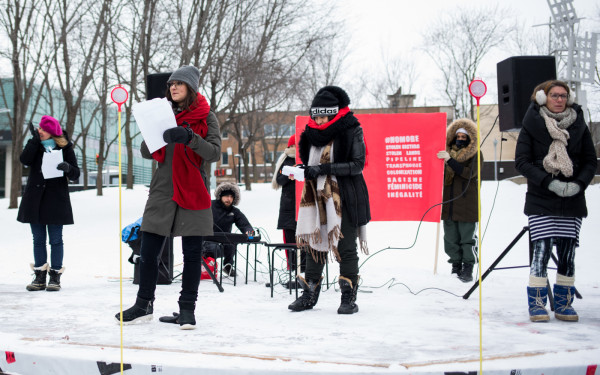Missing Women, Missing Money
Group Responsible for Publicizing Disappearances Given No Funds
Last week, the Minister of State for Status of Women Canada, Rona Ambrose, detailed the federal government’s $10 million national strategy to address the disproportionately high number of missing and murdered aboriginal women in Canada.
After creating the only comprehensive database of its kind and filing nearly 600 cases of missing and murdered Aboriginal women in Canada, the SIS initiative pushed the issue into the public discourse and organized vigils across Canada to memorialize the missing and the dead.
The SIS was left out of the federal budget because its five-year mandate was not extended. With the budget exclusion, SIS might need to shut down and the group has been told that it has to discontinue its database by Status of Women Canada.
In its place, the Conservatives announced that $4 million would go to the RCMP’s Canadian Police Centre for Missing and Exploited Children to create a new branch.
The branch, which will be called the National Police Support Centre for Missing Persons and Unidentified Remains, is scheduled to begin operations in 2013.
In an Indigenous studies seminar series at McGill University on Nov. 4, several speakers criticized the government’s strategy.
“[Amnesty International’s] recommendations have always been to consult and incorporate with women’s groups to find solutions—because they have the solutions. To [continue to] have the data is a huge issue,” said Béatrice Vaugrante, the executive director of Amnesty International Canada’s francophone Branch.
“It is thanks to and because of the SIS project and the Native Women’s Association of Canada that we know that more than 500 women in Canada disappeared and were murdered,” she continued. “And we’re speaking about Canada—this is just unacceptable.”
“If it was not for [their] work, I doubt very much that Canadians would be aware of these issues,” agreed Ellen Gabriel, the president of the Quebec Native Women’s Association. “[The $4 million] announced is really going to organizations and authorities like the RCMP who will not work in concert with Aboriginal women’s groups.”
As was reported by the Aboriginal People’s Television Network, a representative from NWAC—which has been working closely with SIS since 2005—said she felt “betrayed” and “shocked” by the announcement, as the organization was not informed ahead of time and feel that the money is funding something “that has nothing to do with Aboriginal women.”
NWAC also told the APTN that the SIS project will continue with our without government money.
This article originally appeared in Volume 31, Issue 13, published November 9, 2010.

__900_598_90.jpg)
_600_832_s.png)

_(1)__600_375_90_s_c1.jpg)

_600_375_90_s_c1.jpg)